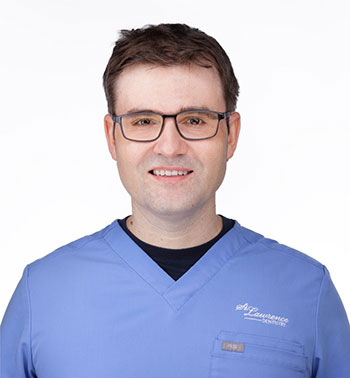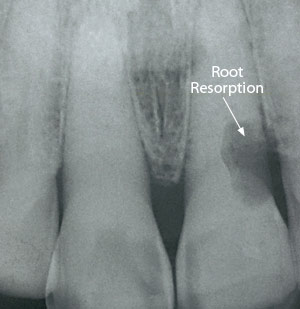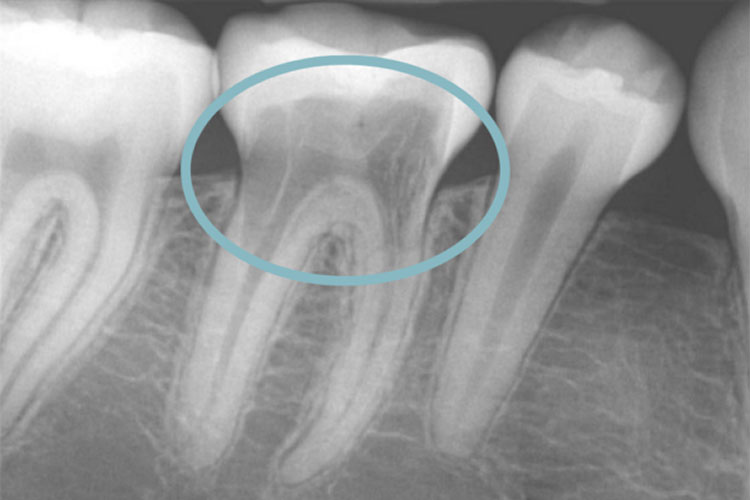Welcome to an intriguing exploration of tooth resorption, a phenomenon that perplexes many, by Dr. Allan Hawryluk, a dedicated dentist at St. Lawrence Dentistry in Mississauga.
Here, we will delve into the mysterious process where the body, in an unexpected turn, decides to break down and absorb its tooth structure, affecting both the tooth’s external (visible) and internal (hidden) parts. It is a condition that can lead to tooth loss and manifests in two primary forms: internal and external Resorption, each presenting unique challenges and treatment pathways.

The Hidden Aggressors
Let’s uncover the culprits behind tooth resorption, starting with Internal Resorption. Often triggered by trauma or injury, this condition ignites an inflammatory response within the tooth’s pulp, potentially also caused by chronic pulpitis, the inflammation of the pulp. External Resorption takes place when external forces, such as trauma, orthodontic treatments, or chronic inflammation, wage an assault on our teeth. This category also includes the impact of systemic issues like tumors or the effects of radiation therapy, revealing the diverse origins of tooth resorption.
Charting the Course of Treatment
Dr. Allan Hawryluk can sometimes treat Internal Resorption with root canal therapy. It involves meticulously removing the affected pulp and cleaning and sealing the tooth’s interior. In cases where the tooth is beyond saving, extraction is necessary. External Resorption demands a nuanced approach tailored to the Resorption’s extent and nature. From root canal therapy for early-stage pulp involvement to interventions like dental fillings – to remove resorptive lesions, the treatment aims to preserve as much of the tooth as possible. Extraction becomes the final option when the tooth’s structural integrity is severely compromised.
Fortifying Defenses: Prevention and Early Detection
Dr. Hawryluk emphasizes the critical role of prevention and early detection. Regular dental check-ups at St. Lawrence Dentistry are a vigilant guard against Resorption, supplemented by protective gear during sports to shield teeth from trauma. Monitoring through X-rays and dental examinations is a cornerstone for managing tooth resorption effectively.
The Viral Connection: A Complex Puzzle
Though direct evidence linking viruses to tooth resorption remains scarce, the potential for viral infections to indirectly set the stage for Resorption through systemic inflammation and immune responses is a fascinating area of ongoing research. It underscores the complex relationship between systemic health, oral health, and the multifaceted nature of dental conditions, highlighting the importance of comprehensive care and vigilance in oral health.

A Beacon of Knowledge and Care
Brought to you by Dr. Allan Hawryluk of St. Lawrence Dentistry, this exploration into tooth resorption sheds light on its causes and treatments. It emphasizes the importance of continuous research and dialogue with dental professionals. Whether you’re battling tooth resorption or seeking to understand this complex condition, Dr. Hawryluk and his team are ready to guide you through the intricacies of dental health and provide the care you need.
- St. Lawrence Dentistry Looks Forward To St. Patrick’s Day! - March 12, 2025
- Understanding Dental X-Rays and Radiation: What You Should Know - January 13, 2025
- Happy New Year from St. Lawrence Dentistry! - December 30, 2024











